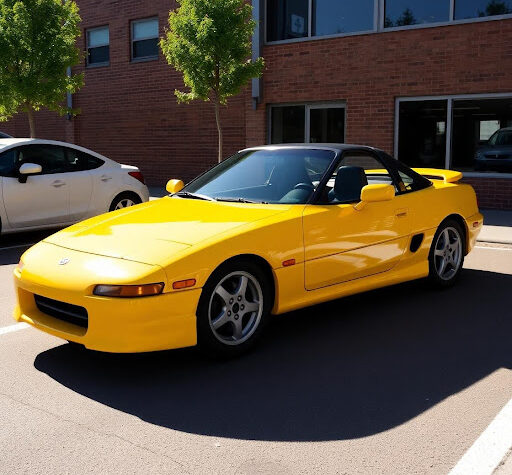

Johanneberg Science Park which was opened by the Foundation Chalmers University of Technology along with the City of Gothenburg in December 2009, consists of more than 80 high-tech companies employing over 700 people.
The Johanneberg Science Park is designed as an international meeting place for companies and institutes in the sectors of technology, sustainable energy, material technologies and nanotechnology. The park is expected to be an engine of growth for research and development as well as provide jobs to the regular flow of engineering graduates. It is estimated that over 1,000 engineering graduates or their equivalent and 300 post-graduates enter the job market every year in the region.
It is the third technology park in the Swedish city of Gothenburg, adding to the Lindholmen Science Park and the Sahlgrenska Science Park. Gothenburg has the largest harbor in Scandinavia, which has helped attract investors in various industries including automotive, ICT, petro chemistry, life sciences and biomedicine. The Gothenburg region is ranked 16 out of 145 in terms of the World Knowledge Competitiveness Index 2008.
According to Mats Bergh, CEO of the Johanneberg Science Park, the park first focused on areas that concern community planning, including the development of urban environments, materials science and energy technology, or transportation and communication issues. Bergh was the one and only employee at the park at its inception. The idea was to hire people for the science park from industry or academia who would run all the major development projects for a specific time.
“The company does not conduct its own research, but instead is tasked with establishing partnerships with knowledge-intensive companies, research institutes, universities and colleges. Even the City of Gothenburg may be involved in a unique way,” said the Johanneberg Science Park AB in a press release last year.
Johanneberg Science Park has a distinct advantage in its location in Chalmers Science Park, with plenty of room in the immediate vicinity for other companies and organizations wishing to establish themselves in the area. Mats Bergh’s hope is that both small specialist companies and big corporations like Volvo, SKF and ABB will set up in Johanneberg Science Park – not only by establishing their own operations there, but also by getting involved in the programs and instruction at Chalmers and maybe even at the University of Gothenburg.
“This would increase interest in technology among the students while simultaneously giving the companies greater opportunities for scouting. We also want to highlight research. This is important for creating more diversified trade and industry in the region. Imagine if a new company the size of Volvo could grow from here? I want to find a way to provide extra assistance to young and growing companies,” says Bergh.
The Johanneberg Science Park works closely with the Lindholmen Science Park and Sahlgrenska Science Park and hopes to also cooperate with technology parks in Borås, Skövde and Trollhättan. The focus of the latest science park is firmly on creating new jobs. “In the first stage, from now until 2014, the goal is to create 1,500 new jobs in trade and industry. Over the long term, these figures will rise to 5,000-10,000. Lindholmen had a goal of ten thousand jobs and they’re already almost there, despite the recession,“ says Bergh.
Automotive Industries (AI) asked Bergh to tell us why Johanneberg Science Park focuses on the development of urban environments, materials science and energy technology, transportation and communication issues?
Bergh: We will primarily focus on these areas because they are defined, on a national
level, as strategic development areas and also in alignment with the subjects that Chalmers University of Technology has chosen as profile areas at Campus Johanneberg.
AI: How many companies have set up shop in the one year since the Johanneberg Science Park opened?
Bergh: Today about 700 people in about 80 high-tech companies are working in the science park.
AI: How many automotive companies do you have in the science park?
Bergh: Volvo Technology AB, Powercell and Chalmers Industriteknik.
AI: What makes the Johanneberg Science Park a good location for automotive companies?
Bergh: From a technical point of view, it is the proximity to the combination of advanced automotive and energy research and education and it’s connection to hybrid technology. We also put future transportation solutions in the context of urban development.
AI: Tell us about the kind of work that has or will be done in the fields of electric vehicles and hybrid technologies in the Johanneberg Science Park.
Bergh: Together with Lindholmen Science Park, we have opportunities for developing future transport concepts and demonstrators. We will work closely with industry to develop suitable technologies for community development. To implement electrified vehicles in society, we need to go through the hybrid phase in order to deploy these technologies in a reasonable timeframe.
AI: Quite a few automotive companies have set up operations in the Lindholmen Science Park – what edge does Johanneberg Science Park have over Lindholmen?
Bergh: Johanneberg Science Park will put the vehicle technologies developed at Lindholmen Science Park into a broader context in the sense of community development. We will also address technology issues not yet covered by the activities at Lindholmen Science Park. Johanneberg Science Park is also located more or less at the heart of Chalmers, meaning a closer connection to substantial science and technology research within energy and community development.
AI: Tell us about the relationship between your park and the engineering and science institutes/universities in the region – how do you hope to see these relationships evolve?
Bergh: We have well established and close relations with universities and research institutes in the region. To be a driving force in efforts to establish cooperation between society, industry and academia, it is essential to continually work together and participate in activities with universities and institutes. We also aim at creating close relations with science and technology parks abroad since the opportunities to implement new technologies on various markets are quite different and we need to have local market knowledge.




More Stories
Bangkok International Motor Show 2025 – The Talk of Sensuous Automotive
Earn GHG reduction values through MOL Pure Car Carrier “Book and Claim (B&C)” service
Dry silicon composite by Blue Current is the next generation of battery technology